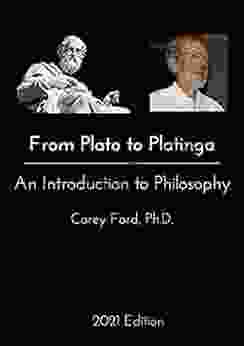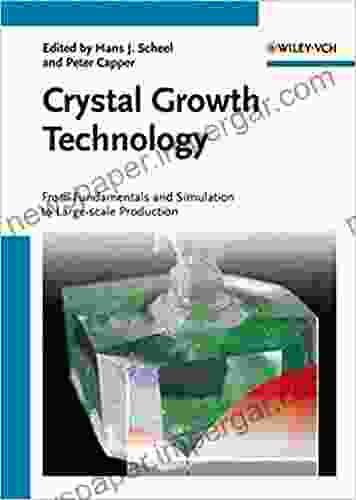Unlock the Secrets of Photovoltaic Technology: From Fundamentals and Simulation to Large-Scale Production

Table of Contents
- Photovoltaic Basics
- PV Simulation
- PV Module Manufacturing
- PV System Design and Installation
- PV Applications
- Future of PV
Photovoltaics (PV) is the conversion of light into electricity using semiconductor devices called solar cells. Solar cells are made of materials that absorb sunlight and generate an electrical current. The amount of electricity generated depends on the size and efficiency of the solar cell.
PV technology has been around for over 100 years, but it has only recently become a viable source of energy. This is due to advances in solar cell technology that have made solar cells more efficient and less expensive.
5 out of 5
| Language | : | English |
| File size | : | 5612 KB |
| Text-to-Speech | : | Enabled |
| Screen Reader | : | Supported |
| Enhanced typesetting | : | Enabled |
| Print length | : | 867 pages |
Today, PV is one of the fastest-growing sources of energy in the world. It is used in a variety of applications, including residential, commercial, and industrial. PV is also being used to power off-grid systems, such as those used in remote locations or areas with limited access to electricity.
Photovoltaic Basics
Solar cells are made of semiconductor materials, such as silicon. When sunlight strikes a solar cell, it creates an electrical current. The current is then converted into alternating current (AC) using an inverter.
The efficiency of a solar cell is measured by its conversion efficiency. The conversion efficiency is the percentage of sunlight that is converted into electricity. The best solar cells have conversion efficiencies of over 20%.
The size of a solar cell is measured by its area. The area is the amount of surface area that is exposed to sunlight. The larger the solar cell, the more electricity it can generate.
The cost of a solar cell is measured by its cost per watt. The cost per watt is the amount of money that it costs to Free Download a solar cell that can generate one watt of electricity. The cost per watt of solar cells has decreased significantly in recent years.
PV Simulation
PV simulation is the process of using computer models to predict the performance of PV systems. PV simulation software can be used to design PV systems, optimize their performance, and troubleshoot problems.
PV simulation software is a valuable tool for anyone who is involved in the design or installation of PV systems. It can help to ensure that PV systems are designed and installed properly, and that they will meet the performance expectations of the customer.
PV Module Manufacturing
PV modules are made by connecting individual solar cells together. PV modules are typically made in sizes that are convenient for shipping and installation.
PV modules are manufactured in a variety of ways. The most common method is to use a silicon wafer-based process. In this process, silicon wafers are cut from a block of silicon and then treated to create a solar cell. The solar cells are then connected together to form a PV module.
Thin-film PV modules are another type of PV module that is becoming increasingly popular. Thin-film PV modules are made by depositing a thin layer of semiconductor material onto a substrate. The substrate can be made of glass, metal, or plastic.
Thin-film PV modules are lighter and less expensive than silicon wafer-based PV modules. However, they are also less efficient.
PV System Design and Installation
PV systems are designed to meet the specific needs of the customer. The system design will depend on the customer's energy needs, budget, and site conditions.
PV systems are typically installed on rooftops, but they can also be installed on the ground or other structures. PV systems can be grid-tied or off-grid.
Grid-tied PV systems are connected to the electrical grid. This allows the customer to sell excess electricity back to the utility. Off-grid PV systems are not connected to the electrical grid. They are typically used to power remote locations or areas with limited access to electricity.
PV Applications
PV is used in a variety of applications, including:
* Residential PV: PV systems can be used to power homes and apartments. * Commercial PV: PV systems can be used to power businesses and other commercial buildings. * Industrial PV: PV systems can be used to power factories and other industrial facilities. * Utility-scale PV: PV systems can be used to generate electricity for the electrical grid. * Off-grid PV: PV systems can be used to power remote locations or areas with limited access to electricity.
Future of PV
PV is a rapidly growing industry. The cost of PV modules has decreased significantly in recent years, and the efficiency of PV cells has increased. This makes PV a more affordable and viable source of energy.
In the future, PV is expected to play an increasingly important role in the global energy mix. PV is a clean, renewable source of energy that can help to reduce our dependence on fossil fuels.
Here are some of the key trends that are expected to drive the growth of the PV industry in the future:
* The cost of PV modules is expected to continue to decrease. * The efficiency of PV cells is expected to continue to increase. * The demand for PV is expected to increase in developing countries. * The development of new PV technologies is expected to lead to even greater cost reductions and efficiency improvements.
PV is a promising technology that has the potential to make a significant contribution to the global energy mix. With continued cost reductions and efficiency improvements, PV is expected to become an increasingly affordable and viable source of energy in the future.
5 out of 5
| Language | : | English |
| File size | : | 5612 KB |
| Text-to-Speech | : | Enabled |
| Screen Reader | : | Supported |
| Enhanced typesetting | : | Enabled |
| Print length | : | 867 pages |
Do you want to contribute by writing guest posts on this blog?
Please contact us and send us a resume of previous articles that you have written.
 Book
Book Novel
Novel Page
Page Chapter
Chapter Text
Text Story
Story Genre
Genre Reader
Reader Library
Library Paperback
Paperback E-book
E-book Magazine
Magazine Newspaper
Newspaper Paragraph
Paragraph Sentence
Sentence Bookmark
Bookmark Shelf
Shelf Glossary
Glossary Bibliography
Bibliography Foreword
Foreword Preface
Preface Synopsis
Synopsis Annotation
Annotation Footnote
Footnote Manuscript
Manuscript Scroll
Scroll Codex
Codex Tome
Tome Bestseller
Bestseller Classics
Classics Library card
Library card Narrative
Narrative Biography
Biography Autobiography
Autobiography Memoir
Memoir Reference
Reference Encyclopedia
Encyclopedia Joost Pauwelyn
Joost Pauwelyn Jonathan Brown
Jonathan Brown Joseph Pietrykowski
Joseph Pietrykowski Jonathan Rigg
Jonathan Rigg John King
John King John Connell
John Connell Jolyon C Parish
Jolyon C Parish John Grehan
John Grehan Joseph B Soloveitchik
Joseph B Soloveitchik Jonny Cassidy
Jonny Cassidy Josef Niebauer
Josef Niebauer Joseph Allen Freeborn
Joseph Allen Freeborn Kindle Edition
Kindle Edition John Fulford
John Fulford John O Quigley
John O Quigley John Heritage
John Heritage John E O Neill
John E O Neill John Wills
John Wills John Kenney
John Kenney John Scott
John Scott
Light bulbAdvertise smarter! Our strategic ad space ensures maximum exposure. Reserve your spot today!

 Yasushi InoueUnveiling the Depths of Human Nature with Nietzsche's "Human, All Too Human"
Yasushi InoueUnveiling the Depths of Human Nature with Nietzsche's "Human, All Too Human"
 Daniel KnightBlood on the Prairie: Uncover the Epic Showdown of the 1937 Chicago Steel...
Daniel KnightBlood on the Prairie: Uncover the Epic Showdown of the 1937 Chicago Steel...
 Brayden ReedHomemade Bread Recipes For Beginners And Pros: The Ultimate Guide to Baking...
Brayden ReedHomemade Bread Recipes For Beginners And Pros: The Ultimate Guide to Baking... Maurice ParkerFollow ·15.2k
Maurice ParkerFollow ·15.2k Brody PowellFollow ·11.1k
Brody PowellFollow ·11.1k Charlie ScottFollow ·17.9k
Charlie ScottFollow ·17.9k Cade SimmonsFollow ·16.1k
Cade SimmonsFollow ·16.1k Julio CortázarFollow ·18.2k
Julio CortázarFollow ·18.2k Rubén DaríoFollow ·17.2k
Rubén DaríoFollow ·17.2k Clark CampbellFollow ·13.1k
Clark CampbellFollow ·13.1k William WordsworthFollow ·5.5k
William WordsworthFollow ·5.5k

 Jake Powell
Jake PowellThe Constitution of the State of Colorado: A Legacy of...
Since its adoption in 1876, the...

 Devin Ross
Devin RossFrom Plato to Plantinga: A Journey Through the History of...
Philosophy is the study of...

 Robin Powell
Robin PowellWords That Hurt, Words That Heal: The Power of Language...
Words are powerful. They can...

 T.S. Eliot
T.S. EliotTantalize Your Taste Buds with Over 90 Low-Carb Ethnic...
Indulge in a Culinary Adventure with "Over...
5 out of 5
| Language | : | English |
| File size | : | 5612 KB |
| Text-to-Speech | : | Enabled |
| Screen Reader | : | Supported |
| Enhanced typesetting | : | Enabled |
| Print length | : | 867 pages |










